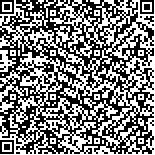本文已被:浏览 962次 下载 516次
Received:September 10, 2021 Published Online:December 20, 2021
Received:September 10, 2021 Published Online:December 20, 2021
中文摘要: 目的 分析腹壁型韧带样纤维瘤病的CT和MRI影像学表现及其形成的病理基础,以提高对本病的影像学诊断。方法 收集2018年9月至2021年4月南京江北医院经手术病理证实的5例腹壁型韧带样纤维瘤病患者临床资料,3例行CT平扫和增强检查,2例行CT平扫和MRI检查。回顾性分析CT、MRI影像学表现。结果 5例均为单发病灶,病变位于右侧腹直肌4例,左侧腹内斜肌1例。其中4例近2年内有腹壁损伤史。CT平扫示病灶低于同层肌肉的软组织密度影,形态呈梭形,长轴与肌纤维走行一致,密度均匀,无钙化和囊变;增强扫描呈“慢进慢出”的强化模式。MRI示T1WI略低信号;T2WI分别呈略高和高信号,1例信号不均匀,其内见条带状低信号,为致密胶原纤维形成的低信号区;DWI呈高信号,ADC值稍低信号;1例病灶边界欠清,可见“筋膜尾征”,1例病灶呈“爪”状浸润生长。病理组织学上肿瘤主要由增生的梭形纤维母细胞和胶原纤维束组成,间质内血管细小狭长,核分裂像罕见;免疫组化标记物β-Catenin、Vimentin均为阳性。结论 腹壁型韧带样纤维瘤病在CT、MRI表现上具有一定的特征性征象。与CT相比,在肿瘤的组成成分和对周围组织浸润上MRI更有优越性。
中文关键词: 韧带样纤维瘤,腹壁型 计算机断层扫描 磁共振成像 病理 免疫组化
Abstract:Objective To investigate the CT and MRI signs of abdominal wall type desmoid fibromatosis and analyze its pathological basis, so as to improve the imaging diagnosis of this disease. Methods The clinical data of 5 patients with abdominal wall desmoid-type fibromatosis confirmed by surgery and pathology in Nanjing Jiangbei Hospital from September 2018 to April 2021 were collected. Among them, 3 cases received plain CT and contrast-enhanced CT, and 2 cases received plain CT and MRI. CT and MRI imaging features were analyzed retrospectively. Results All 5 cases were single lesion. The lesions were located in the right rectus abdominis in 4 cases and the left internal oblique abdominis in 1 case. Four of them had a history of abdominal wall injury in recent 2 years. Plain CT showed that the lesion was lower than the soft tissue density shadow of the same layer of muscle, with the spindle shape and uniform density, the long axis was consistent with the direction of muscle fibers, and there was no calcification and cystic change. The contrast-enhanced CT showed a “slow in and slow out” mode. MRI showed slightly low signal on T1WI. On T2WI, the signal was slightly high and high, respectively. In 1 case, the signal was uneven, with banded low signal, which was a low signal area formed by dense collagen fibers. DWI was a high signal and ADC was a little low signal. In 1 case, the boundary of the lesion was unclear, and the fascial tail sig" was visible. In 1 case, the lesion was “claw” like infiltration and growth. In the histopathology, the tumor was mainly composed of proliferative spindle fibroblasts and collagen fiber bundles. The blood vessels in the stroma were small and narrow, and mitotic images were rare. Immunohistochemical markers β-Catenin and Vimentin were positive. Conclusion Abdominal wall desmoid-type fibromatosis has certain characteristic signs on CT and MRI. Compared with CT, MRI has more advantages in tumor components and infiltration of surrounding tissues.
文章编号: 中图分类号:R730.4 R735 文献标志码:B
基金项目:
引用文本:
